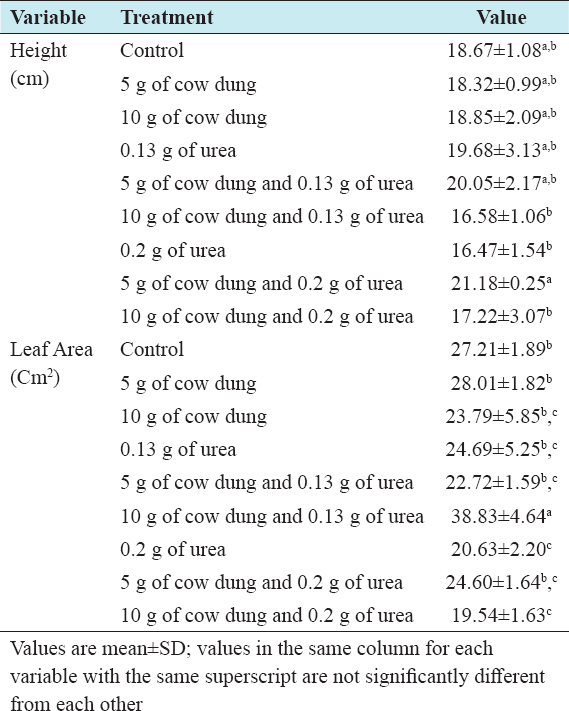Response of Mansonia altissima (A. chev.) seedlings to different levels of organic and inorganic fertilizers at nursery stage
M. O. Ojo1, Ajayi Ezekiel2*
1Department of Sustainable Forest Management, Forestry Research Institute of Nigeria, Ibadan, Oyo State, Nigeria, 2Department of Forestry and Wildlife Management, Adekunle Ajasin University, Akungba Akoko, Ondo State, Nigeria
ABSTRACT
This study assessed the response of Mansonia altissima (A. chev) seedlings to different levels of organic (cow dung) and inorganic (urea) fertilizers. After pricking, the seedlings were monitored for 8 weeks and the following variables assessed; seedling height (cm), stem diameter (mm), number of leaves, leaf area (cm2), and biomass production. Data collected were subjected to analysis of variance. Results revealed that the seedling growth parameters measured were significantly affected by organic and inorganic fertilizers. The best performance was observed in the seedlings administered with 5 g of cow dung and 0.2 g of urea which recorded the highest mean seedling height of 21.18 ± 0.25 cm while seedlings administered with the 0.13 g of urea treatment recorded the highest mean number of leaves of 6.33 ± 0.58. Seedlings administered with the 10 g of cow dung and 0.13 g of urea treatment recorded the highest mean leaf area of 38.83 ± 4.64 cm2. Mean collar diameter of 0.41 ± 0.09 mm was recorded from seedlings administered with the 0.2 g of urea treatment. The result of this study showed that the combination of organic and inorganic fertilizers at different quantities has positive effect on the growth performance M. altissima seedlings at the nursery stage.
Keywords: Mansonia, altissima, cow-dung, seedlings








